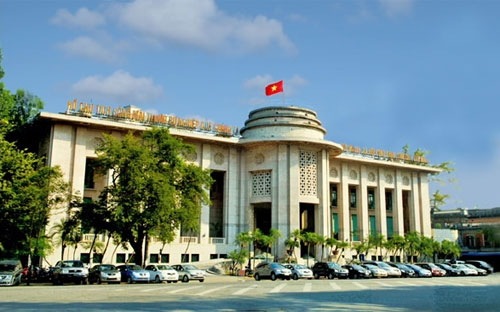|
Will Vietnam
restructure the central bank?
For the last ten
years, the State Bank of Vietnam (SBV) has said it would restructure its
operations.
The
government has instructed SBV to continue the plan on restructuring the
banking system in 2016-2020. But the restructuring has not been implemented,
though SBV once drew up a plan years ago.
Determining the key tasks of the State Bank raised controversy then. The previous Law on the State Bank stipulated that the State Bank’s operation aims to stabilize the currency, help ensure the safe operation of the banking system, and foster socio-economic development.
Later,
one more task was added: the State Bank’s operation aims to ensure the safety
and efficiency of the nation’s payment system.
As many different goals were set up for the central bank, analysts emphasized that it was necessary to define the priority order of the tasks. At the international workshop discussing the role of the State Bank held in March 2006, experts said that there were two major goals – stabilizing the currency value and ensuring the safe operation of the banking system and the nation’s payment system. Of these, stabilizing the value of the local currency must be the most important task. Meanwhile, the task of fostering the socio-economic development was not found in the list of priority tasks suggested by international experts. The role of the State Bank in ‘fostering the socio-economic development’ is understood as using credit as leverage for economic growth. However, this is not what Vietnam was encouraged to do. Lars Nyberg, deputy governor of the Swedish central bank,10 years ago emphasized that monetary policy could not have direct impacts on the national economy long-term development. Analysts then warned about excessive optimism when abusing the loose monetary policy to boost economic growth and create jobs, saying that the loose policy may lead to a credit boom and start a period of inflation escalation. And this happened : banks continued pumping capital into the economy with credit growth rate sometimes reaching 53 percent a year, and Vietnam saw escalating inflation rate which lasted until 2011. The problems which were mentioned 10 years ago now still exist. SBV has to implement tasks assigned to it by the National Assembly. It needs to help control the inflation rate at below 5 percent, cut the lending interest rate, stabilize the dong/dollar exchange rate, increase the forex reserve, ensure credit growth at reasonable rates to help boost GDP and join forces with a fiscal policy to issue government bonds. This means that the State Bank still is burdened with too many duties which may make it perplexed.
TBKTVN
|
Thứ Hai, 18 tháng 7, 2016
Đăng ký:
Đăng Nhận xét (Atom)

Không có nhận xét nào:
Đăng nhận xét